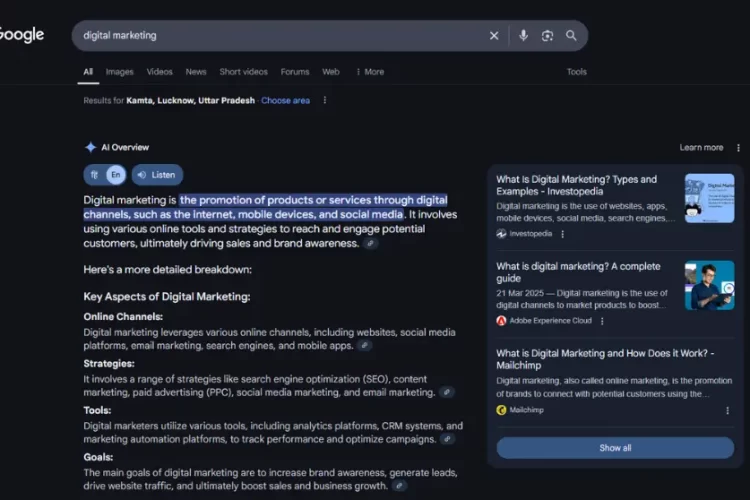
Achieving high traffic on your website is just the first step. The ultimate goal is to convert those visitors into valuable customers. This is where Conversion Rate Optimization (CRO) becomes crucial. CRO involves enhancing your website to boost the percentage of visitors who take the desired action, whether it’s making a purchase, signing up for a newsletter, or filling out a contact form. Here are some comprehensive tips to boost your website’s performance through effective CRO strategies.
1. Understand Your Audience Before looking into optimization techniques, understand your target audience. Conduct market research to grasp their needs, preferences, and pain points. Tailor your website to resonate with your audience, creating a seamless and personalized experience.
2. Streamline Navigation
A user-friendly and intuitive navigation structure is essential for keeping visitors engaged. Simplify menus, provide clear pathways, and ensure that users can easily find what they’re looking for. A streamlined navigation process reduces friction and encourages conversions.
3. Optimize Page Load Speed
Slow-loading pages frustrate visitors and negatively impact conversions. Optimize images, leverage browser caching, and utilize content delivery networks (CDNs) to enhance your website’s loading speed. Every second matters when it comes to user experience.
4. Implement A/B Testing
A/B testing involves comparing two versions of a webpage to determine which performs better. Experiment with variations in headlines, calls-to-action (CTAs), colors, and layouts. Use data-driven insights to identify the most effective elements for conversion.
5. Mobile Optimization Given the surge in mobile device usage, ensure your website is fully responsive. Mobile optimization is not just about design; it’s about delivering a seamless experience across various devices. Google also prioritizes mobile-friendly websites in search results.
6. Compelling Call-to-Actions (CTAs)
Craft persuasive CTAs that guide users toward desired actions. Use action verbs, create a sense of urgency, and make CTAs visually appealing. Strategic placement and compelling language can significantly impact conversion rates.
7. Use Social Proof
Integrate social proof elements like customer testimonials, reviews, and user-generated content. Positive feedback builds trust and credibility, influencing potential customers to take the desired actions.
8. Implement Trust Signals
Instill confidence in your visitors by incorporating trust signals such as secure payment icons, privacy policy links, and industry certifications. Addressing concerns about security and privacy can alleviate hesitation in making transactions.
9. Optimize Forms
Simplify and optimize your forms to reduce friction. Minimize the number of fields, use inline validation, and consider multi-step forms for lengthy information requests. Users are more likely to complete forms that are easy and quick to fill out.
10. Personalization Strategies
Implement personalized content and recommendations based on user behavior and preferences. Tailoring the user experience enhances engagement and increases the likelihood of conversion.
Conclusion
Conversion Rate Optimization is a dynamic and iterative process that requires a deep understanding of your audience and constant adaptation to market trends. By implementing these tips, you can enhance your website’s performance, improve user experience, and ultimately boost conversion rates. Stay vigilant, test rigorously, and keep refining your strategies to stay ahead in the competitive online landscape.
Frequently Asked Questions (FAQs) about CRO
Q1: Why is CRO important for my website?
A1: CRO enhances user experience, boosts conversion rates, and maximizes the impact of your digital efforts.
Q2: How can I identify areas for improvement on my website?
A2: Conduct thorough analytics, utilize heatmaps, and gather user feedback to pinpoint optimization opportunities.
Q3: Is A/B testing necessary for CRO? A3: Yes, A/B testing helps compare variations, providing data-driven insights for effective optimization.
Q4: What role does mobile optimization play in CRO?
A4: Mobile optimization ensures a seamless experience for users on smartphones and tablets, contributing to higher conversions.
Q5: How often should I revisit my CRO strategies?
A5: CRO is an ongoing process; regularly monitor performance, analyze user behavior, and adapt strategies based on changing trends.


